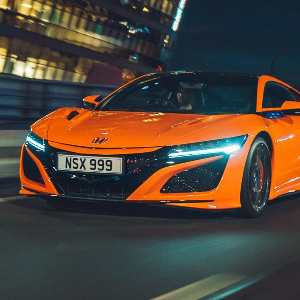
The Toyota Camry punches well above its weight.
When it comes to hybrid cars, Toyota knows a thing or two. It’s been producing them for more than 20 years, and in that time the company has become the byword for hybrid technology. After a hiatus of several years, its flagship saloon, the Camry, has returned and it offers the best of Toyota’s hybrid expertise. More notably, it represents a significant upswing in refinement and quality for the Japanese carmaker.
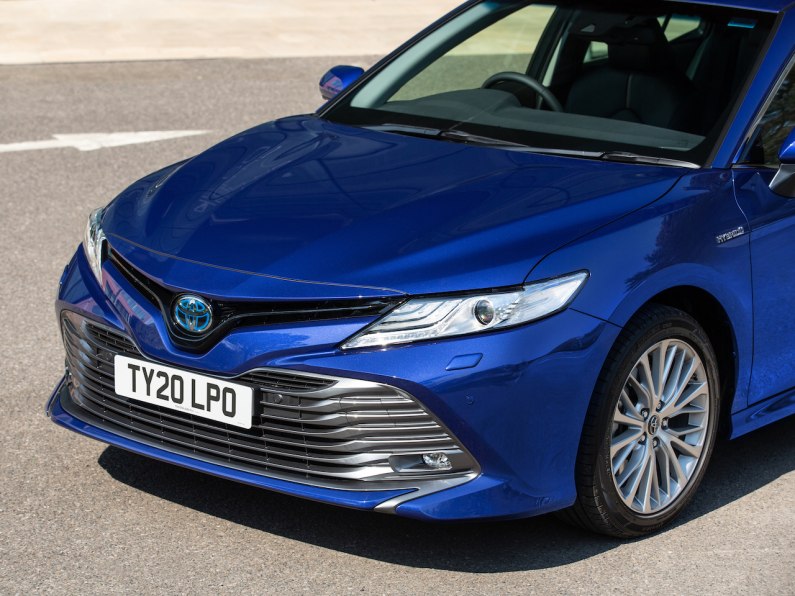
It has a look that sees it comfortably rub shoulders with even the more premium-badged cars in the large saloon segment, such as the Audi A6, BMW 5 Series or Mercedes-Benz E-Class. The Camry overshadows others like the Ford Mondeo, while the Skoda Superb gives it a good run for its money in terms of interior space. While many might bypass the Toyota in favour of that Teutonic lure, to do so would be a rash decision as the Camry is not a car that you should dismiss lightly.
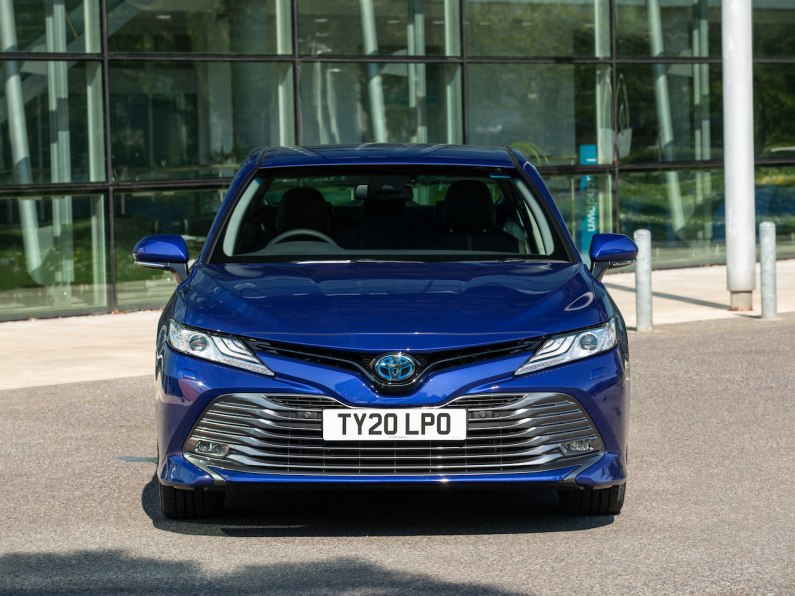
For starters, it uses the latest Toyota New Global Architecture (TNGA), and that allows for better space inside and is a more rigid structure. The latter has positive benefits to how the Camry drives, but more on that in a moment. It’s a large car, measuring 4,885mm in length and boasting a generous 2,825mm wheelbase, benefitting passenger space.
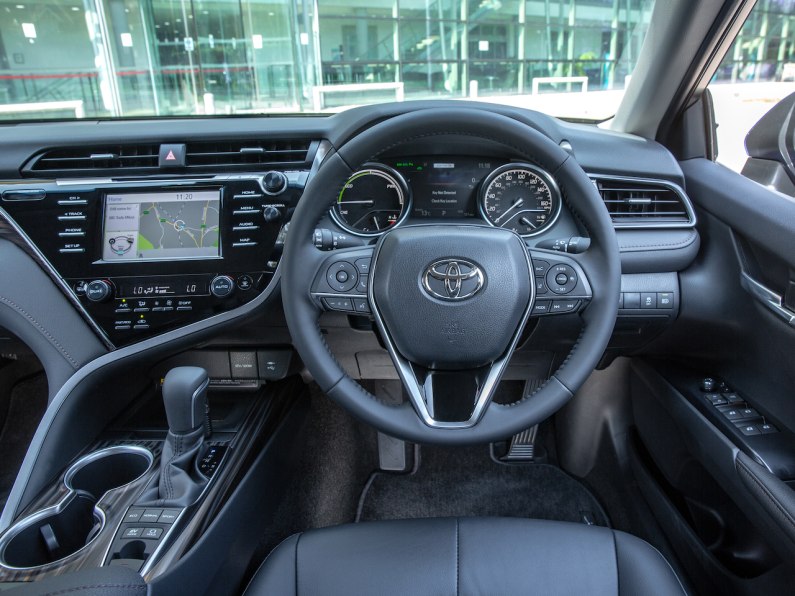
Finding a good driving position isn’t tricky thanks to front seats that provide 260mm of slide adjustment, and offer lumbar support, all done electronically. The front seats are very comfortable, which is good news for those who cover more considerable distances, and they are also heated as standard on both specification grades. Outward visibility is excellent, thanks in part to a slender A-pillar that bows ever-so-slightly to improve your field of vision. The placement of the side mirrors on the door also reduces blind spots when moving out from a junction. With the higher-grade Excel specification, Toyota includes Blind Spot Monitor and Rear Cross Traffic with brake assist as standard.
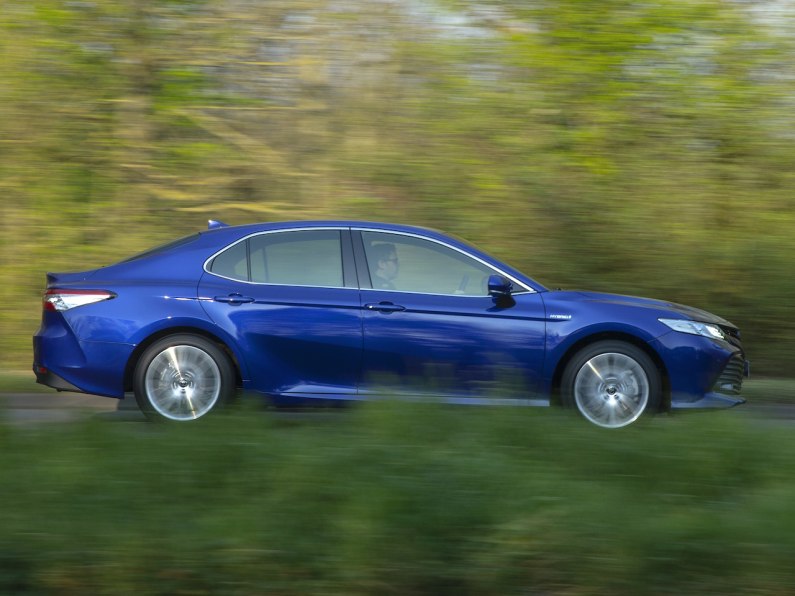
Both versions feature a seven-inch display within the instrument cluster that can show the driver a variety of different information, including an animated graphic of which part of the hybrid powertrain is in operation and the current charge of the onboard battery. It’s laid out clearly and isn’t distracting. The centre console appears as if it’s wrapped up in the dashboard and features a second seven-inch touchscreen display surrounded by physical shortcut buttons for the infotainment system and climate controls. It isn’t as sophisticated in appearance as the closely-related Lexus ES, but ergonomically everything works well.
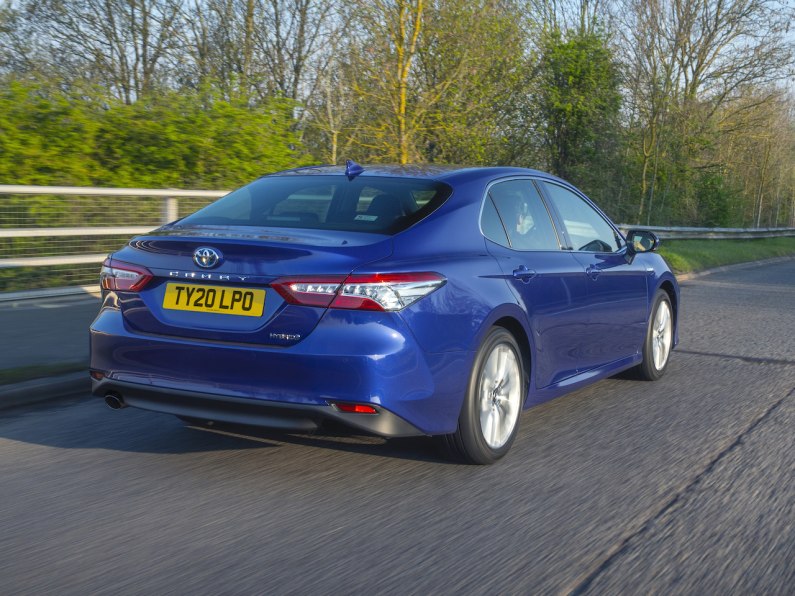
In comparison to some of the other infotainment systems, the offering from Toyota is on the more basic side. It appears dated when you look at what else is out there on the market. Nevertheless, it all works well, and the switchgear has a more solid and higher quality feel than previously experienced in Toyotas. You can’t help but think that every switch inside this car will feel and perform in the same way twenty years from now, such is the feeling of quality the Camry demonstrates.
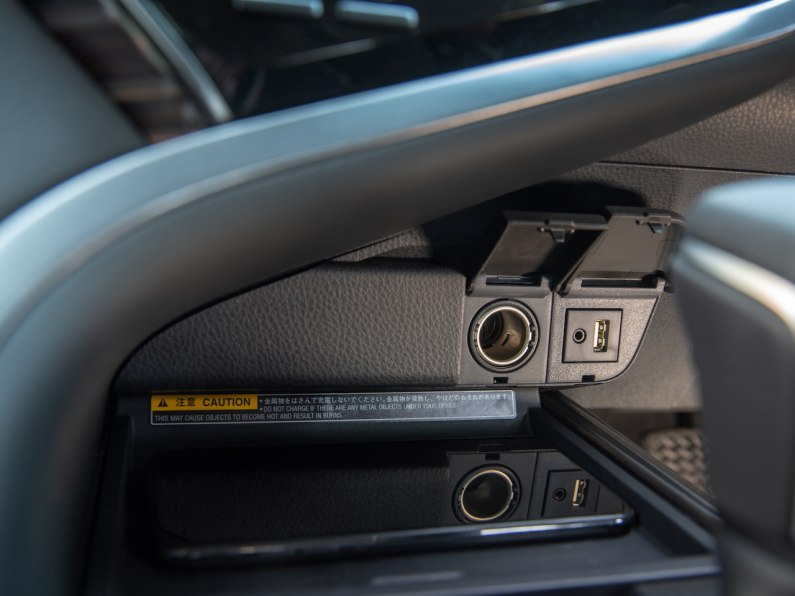
The centre console is high and features decent storage beneath the armrest, sizeable cupholders and further storage in front. The Excel spec gains a wireless charging tray that neatly slides out for you to place your device on, reducing the clutter of wires, but there is also an easily accessible 12-volt power socket and USB-A port. Rear passenger space is generous, and when the middle pew isn’t required, there is a large armrest that can fold down. The rear seatbacks have a 60:40 split to help boost the boot’s 524-litre capacity.
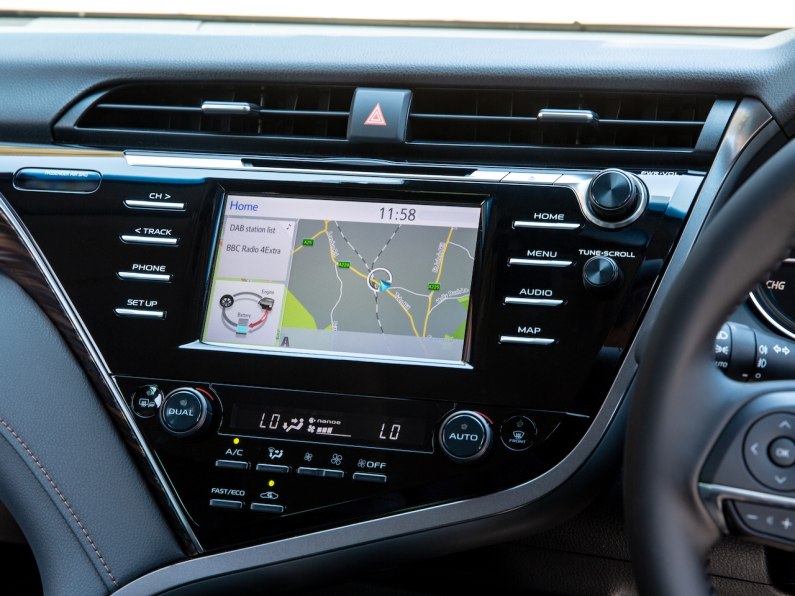
In the past, it was far too easy to be critical of Toyota’s use of CVT (continuously variable transmission) instead of a conventional automatic transmission, but there’s no such criticism now as it works very well and suits the car. Gone is the flurry of revs that don’t correlate to the rate of forward movement; this is a Camry that purrs along and feels silky smooth. It is possible to ‘shift’ gears manually, but the Camry isn’t the kind of car that you want to hustle along, it’s much more about enjoying the ride and arriving at your destination in a relaxed state.
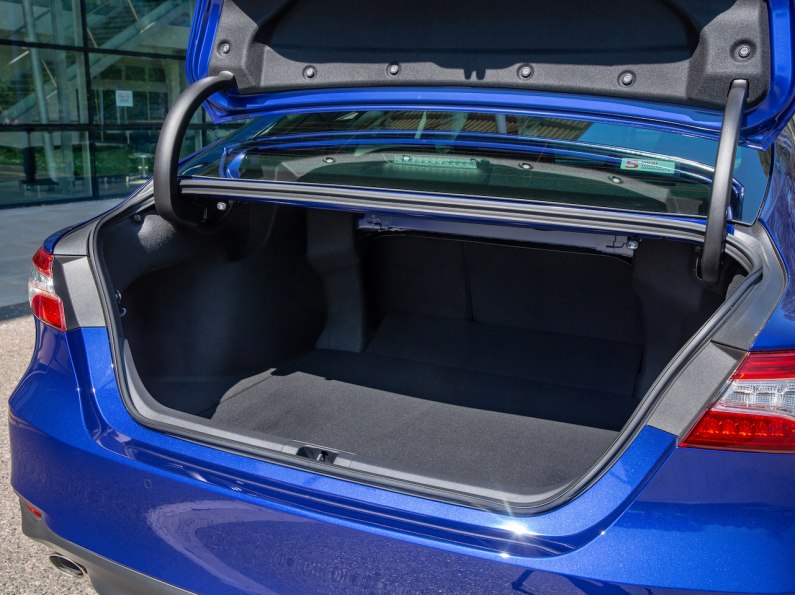
The 2.5-litre four-cylinder petrol engine is augmented at times by a 120bhp electric motor that is fed by a 6.5Ah Nickel-metal hydride battery that can recharge its power as quickly as it recharges. How Toyota mounts the engine helps to reduce vibration, and for the most part, the large four-cylinder is rarely anything more than a distant hum. With 18-inch wheels coming as standard on the Camry Excel, the ride quality is stacked more towards comfort and the double-wishbone real suspension enhances the handling in the faster bends.
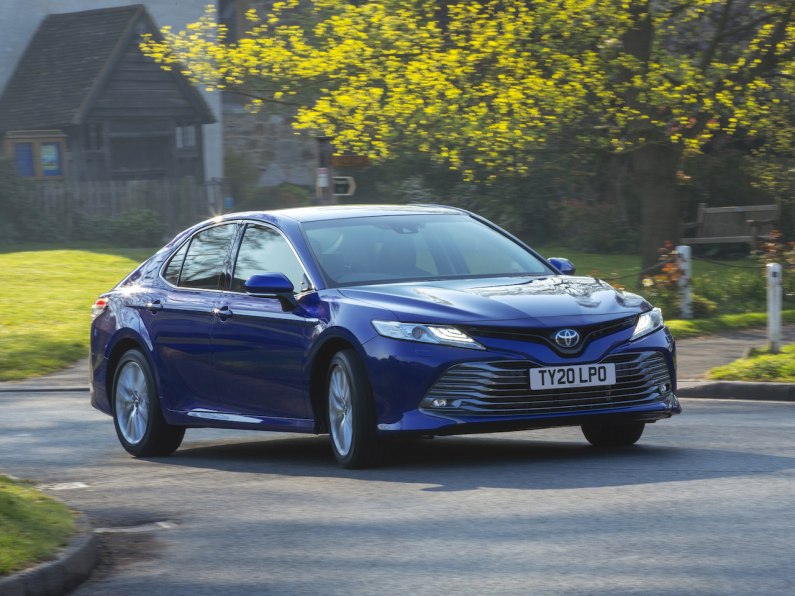
If you’re driving in a town or city at lower speeds, the Camry will happily trundle along using only the electrical part of the hybrid system and can do so for a surprisingly long time. With a 0-62mph time of 8.3 seconds, it isn’t all that quick, but that’s not what the Camry is about. Comfort and refinement are areas where the Toyota performs better and it delivers on both fronts. As a car to consume motorway miles, it does so effortlessly and even though there isn’t a great deal of torque from the engine (221Nm), it never seems strained and glides along with ease. When so many on this segment rely on diesel power, the hybrid petrol powertrain manages to return relatively economical fuel consumption figures. I managed almost 49mpg over the course of a week with very mixed use.
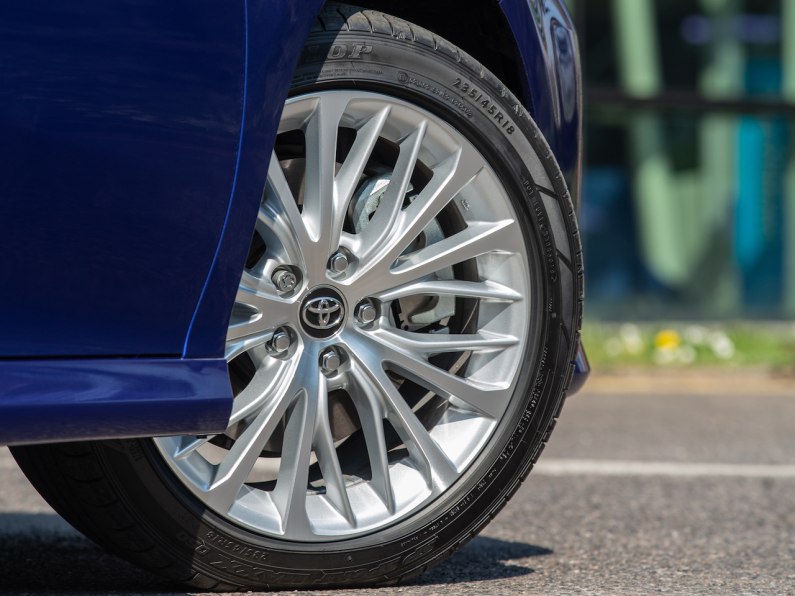
For pure comfort and ease of use the Toyota Camry scores highly. It doesn’t have the electric-only driving range that some plug-in hybrids may offer, but in low-speed environments it is capable of spending a surprising amount of time using only its battery. Something that some buyers who don’t want to have to be plugging their car in every day may prefer. Equally, not having to frequent a grimy diesel fuel pump will be a further boon to some. As hybrids go, this is one not to be sniffed at.
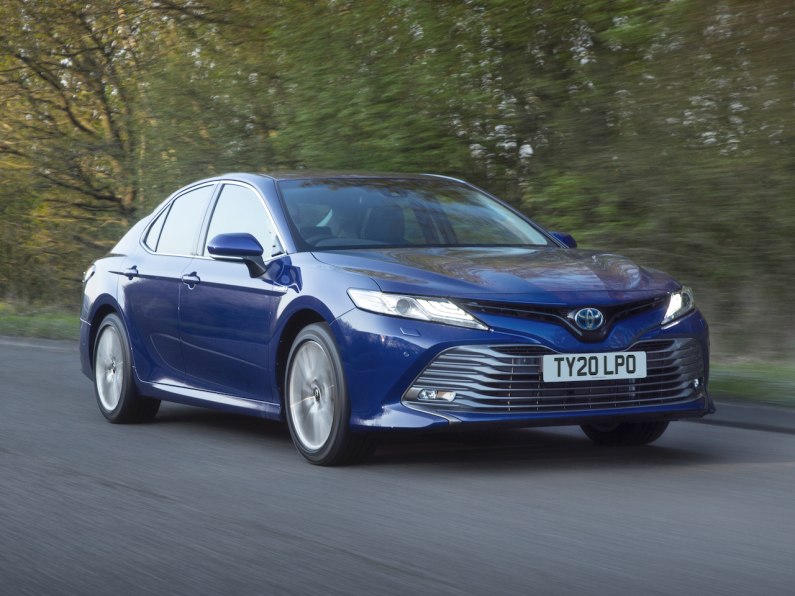
Model: Toyota Camry Excel
Price: £31,990
Engine: 2.5-litre four-cylinder petrol hybrid
Power: 215bhp (combined system)
Torque: 221Nm at 3,600-5,200rpm
0-62mph: 8.3 seconds
Max speed: 112mph
WLTP fuel consumption: 51.3mpg
WLTP CO2: 126g/kmRoad Test: Toyota Camry
